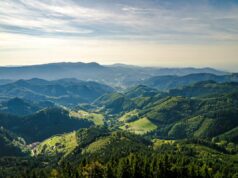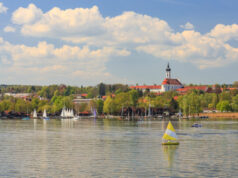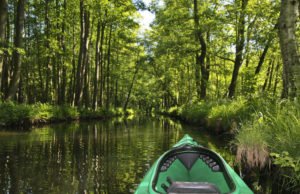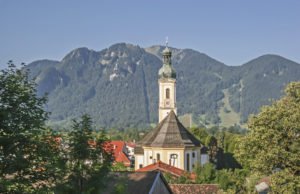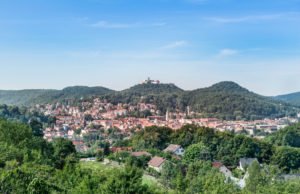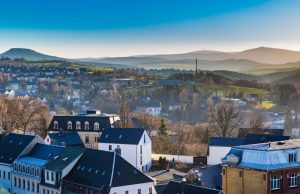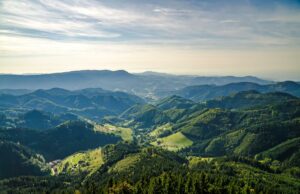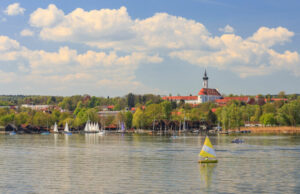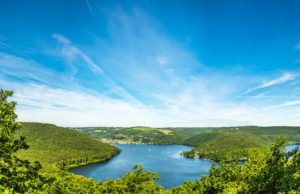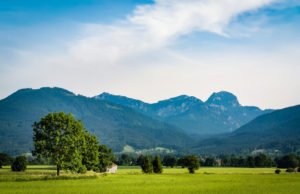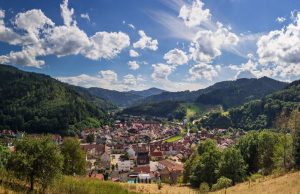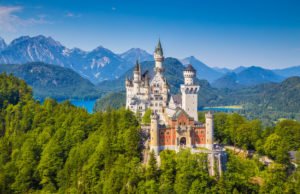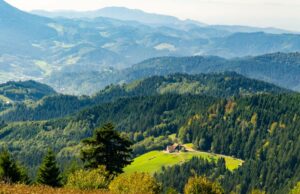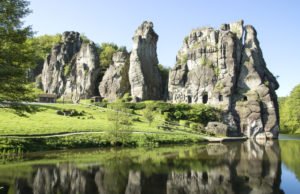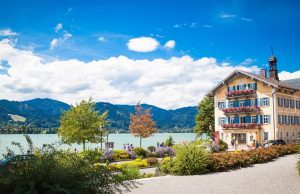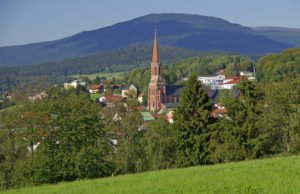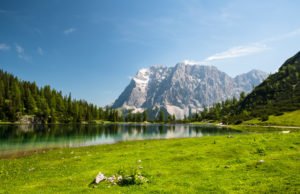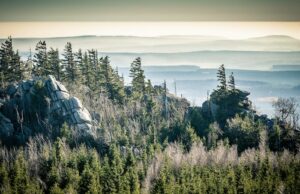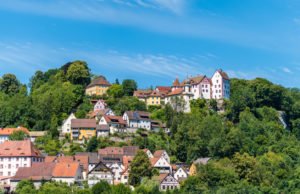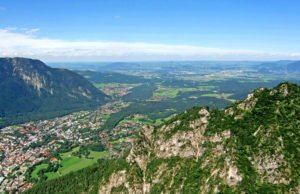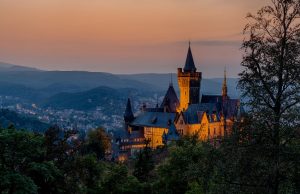
The Essentials
Depending on your interests, summer is ideal for outdoor activities, winter for snow sports, spring for enjoying the flora bloom, and autumn for witnessing the picturesque transformation of foliage. More here…
The Black Forest is characterized by a cool, temperate climate with mild summers, cold and snowy winters, and moderate transitional spring and autumn seasons. More here…
Precipitation is quite evenly distributed in the Black Forest, with summer being the wettest period, and winter seeing most of its precipitation in the form of snow. More here…
Before you pack your bags for the mystical Black Forest region of south-west Germany, let’s take a moment to understand its fascinating climate. Known for its diverse weather patterns, the Black Forest’s weather is heavily influenced by its geographical location and altitude. No matter when you choose to visit, each season brings its own unique charm and a range of activities that can make your trip unforgettable.
Spring: A season of rebirth and colour

Spring in the Black Forest, which lasts from March to May, is an enchanting season of rebirth and revitalisation. As the winter snow steadily recedes and the grip of the cold eases, the region undergoes a magical transformation. The hardy snowdrops are the first to appear, their delicate white heads poking through the thawing ground, signalling the arrival of warmer weather.
But don’t be put off by the occasional chill. The joy of witnessing the landscape emerge from its winter slumber is a spectacle not to be missed.
Advice: Remember that precipitation in the Black Forest is fairly high year-round. Always have waterproof gear handy, even during the supposedly drier seasons.
As spring progresses, the Black Forest becomes a vibrant tableau of colour. The tree canopy turns a rich emerald green as the leaves burst forth, while the forest floor is dotted with the stunning hues of crocuses, daffodils and bluebells. The air is filled with the scent of cherry and apple trees in blossom, making your walks in the forest a delight for the senses.
Increased rainfall in spring nourishes the flora and feeds the region’s many streams and waterfalls, adding a dynamic element to the tranquil landscape.
Spring also marks the start of the outdoor season. The famous Black Forest trails open up and there’s no better way to enjoy the spring blossoms than on a gentle hike. Alternatively, take a boat trip on one of the many lakes and rivers and take in the breathtaking panorama of life in bloom.
Summer: Nature at its Peak
Summer, from June to August, is a time of full bloom and lush greenery in the Black Forest. Bathed in sunshine, the region’s vibrant personality comes into its own during this time, making it the peak tourist season. The average temperature during the summer months is a comfortable 20 to 25 degrees Celsius, although it can occasionally get hotter.
In summer, the Black Forest is a lush, green spectacle with a wealth of activities on offer. The hiking trails that criss-cross the region are at their best, offering spectacular journeys through dense forests, open meadows and along fast-flowing rivers. Cycling is another popular pastime, with well-maintained paths offering routes for all abilities.
Tip: Always check the local weather forecast before venturing out on any activity in the Black Forest. The weather can change rapidly and being prepared ensures a smooth adventure.
Remember that summer in the Black Forest can also be the wettest season, with frequent showers and even thunderstorms. So be sure to pack a raincoat and umbrella. Despite the occasional rain, summer days in the Black Forest have a special charm, with the fresh scent of rain-soaked earth mingling with the fragrant flora.
Summer is also when the region’s cuisine is at its most varied. Seasonal specialities such as Black Forest ham, local berries and honey from local bees offer a gastronomic delight. On long, bright evenings, what could be better than dining al fresco and watching the sun set over the forest?
Autumn: A Rustic Palette

Autumn in the Black Forest is a breathtaking display of colour and light. The period from September to November is a time when the region reveals a different kind of beauty, draped in warm, rustic hues. The leaves of the beech, oak and maple trees change from their summer green to a palette of vibrant reds, oranges and yellows. This dramatic change creates a breathtaking backdrop that attracts photographers and artists from around the world, each hoping to capture this fleeting but spectacular scenery.
The days are shorter, the air is crisper and the scent of the forest changes to a mixture of damp earth and the sweet, smoky scent of falling leaves.
Walking at this time of year is a real treat. The cooler weather makes for comfortable trekking conditions and the colourful landscape is a stunning visual treat. Autumn is also an exciting time for mushroom lovers, as the Black Forest boasts a wide variety of edible mushrooms, but always remember to identify them properly or join a guided tour.
Autumn is also harvest time in the Black Forest. The vineyards are ripe with grapes, ready for harvesting and the subsequent winemaking process. A wine tasting tour in autumn is a must. The local wineries offer a range of exquisite wines and the vineyards themselves are a sight to behold with their vines laden with grapes.
Winter: A snowy wonderland

As the last leaves fall and the temperature drops, the Black Forest transforms into a scene straight out of a fairy tale. Winter, which lasts from December to February, transforms the area into a snowy wonderland. The trees, their branches now bare, are adorned with a delicate layer of frost and snow, creating a stark but beautiful contrast to the winter sky.
Winter temperatures in the Black Forest can vary greatly, but expect the mercury to hover around 0 degrees Celsius and often plunge into the negative. Snowfall is common, and the higher altitudes can experience a thick blanket of snow that can last throughout the season.
Despite the cold temperatures, winter is a lively season in the Black Forest. It’s a haven for winter sports enthusiasts, with numerous ski resorts offering a variety of activities including downhill skiing, cross-country skiing and snowboarding. The well-groomed slopes and excellent facilities make it the perfect winter sports destination.
The winter season also brings Christmas, a time of celebration and festivity. Traditional Christmas markets are held in many towns and villages, selling handicrafts, local food and mulled wine, a warm, spiced red wine that is traditional at this time of year.
Tips and Information about the Black Forest
Comprehensive tips for your Black Forest adventure
Whether you’re planning a hiking trip, a winter sports excursion or a relaxed holiday exploring quaint towns and picturesque landscapes, the Black Forest offers an exceptional adventure. But to get the most out of your trip, you need to plan carefully and be prepared.
Consider investing in a sturdy pair of walking shoes or boots. With so many walking trails, good footwear can be a lifesaver. If you are planning to venture into the forest, a detailed map of the area or a GPS device with a map of the local area could be extremely useful.
Best Time to Visit the Black Forest
The ideal time to visit depends on your personal preferences. Summer is great for outdoor activities and vineyard visits. Winter is perfect for snow lovers. Spring offers blooming flora and autumn a picturesque palette of colours.
The Black Forest’s Distinctive Climate
The Black Forest has a cool, temperate climate with four distinct seasons. Summers are mild and winters are cold with heavy snowfall in the higher regions. Spring and autumn are transitional seasons with moderate temperatures.
Rainfall Patterns in the Black Forest
Rainfall in the Black Forest is relatively even throughout the year. Summer tends to be the wettest period, with occasional showers and thunderstorms, while in winter precipitation falls as snow, especially in the higher regions.
Your journey begins now
There’s never a bad time to visit the Black Forest; each season has its own unique charm. Whether you’re hoping to take advantage of the summer hiking trails, enjoy the winter snow, or relax amidst the spring blossoms or autumn leaves, understanding the Black Forest weather can help you prepare for a more enjoyable and comfortable trip. We hope this guide has provided you with valuable insights and wish you an unforgettable journey through the magical Black Forest!



